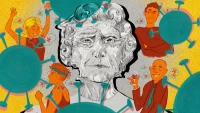The COVID-19 pandemic is far from over, but many are starting to ponder its lasting effects on nursing. The editorial team at American Nurse Journal wanted to know what leaders in the field are thinking, so we convened a virtual roundtable. Leaders in different roles and in different geographic locations were asked to respond to several pandemic-related questions. Here’s a sampling of their responses to a few of the questions.
The roundtable launches a series of articles designed to tackle issues related to how the profession will move forward as the pandemic evolves, such as nurses’ mental health and staff retention. We’ll be including more of the responses to questions we asked leaders as part of the roundtable, and we would like to know what you think. Share your thoughts on social media—on Facebook at American Nurse, on Twitter @myamericannurse, on Instagram at my_american_nurse, and on LinkedIn at American Nurse.
What is the one big change you would like to see in the nursing profession as a result of the pandemic?
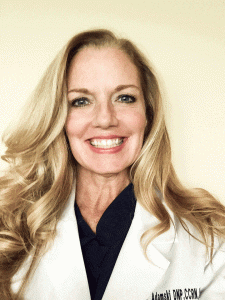 I’d like to see a focus in nursing programs on disaster/pandemic preparedness, and providing the tools necessary for nurses entering the workforce. This education and training should be continued in healthcare facilities as well. Also, formalized crisis support systems for nurses and healthcare team members at the organizational, state, and national levels are important.
I’d like to see a focus in nursing programs on disaster/pandemic preparedness, and providing the tools necessary for nurses entering the workforce. This education and training should be continued in healthcare facilities as well. Also, formalized crisis support systems for nurses and healthcare team members at the organizational, state, and national levels are important.
Jennifer Adamski, DNP, APRN, ACNP-BC, CCRN, FCCM, is program director for the adult-gerontology acute care nurse practitioner program at Nell Hodgson Woodruff School of Nursing at Emory University in Atlanta, Georgia, and a critical care nurse practitioner for the Cleveland Clinic Critical Care Flight Team in Ohio.

I want to see nurses recognized as a key foundation of healthcare and for universities and healthcare organizations to make a conscious effort to highlight nurses as healthcare experts in the media. For example, I see many commercials encouraging vaccinations, but none have featured nurses, who are the ones giving the vaccine and being asked questions by patients. In addition, I want to see nurses recognized for their talent, their education, their expertise, and the remarkable impact they have on healthcare.
Dewi Brown-DeVeaux, DNP, MS, BS, RN, ONC, is director of nursing at NYU Langone Orthopedic Center in New York, New York.

I would like to see the continued grace that we have given others over the last 18 months. When stress levels were high and patience was low, we paused and thought about what others were experiencing in the moment. We weren’t critical of one another, and we came together to safely care for patients. It didn’t matter what department people worked in or if they were critical care or not, everyone’s contribution was vital. The old saying of, “nurses eat their young” became nonexistent.
Kathleen Diatta, PhD, RN, NE-BC, is unit director of PACU/POHA at Emory Healthcare in Atlanta, Georgia.
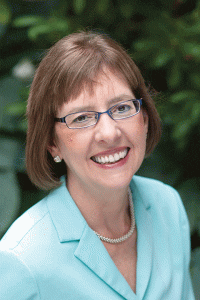 We need to take a hard look at the practice environment in hospitals. There is a huge demand for nurses based on the high acuity of hospitalized patients, and yet there is as much or more demand for nurses in other care settings that offer much less stressful schedules. We need to engage our younger generation of nurses in designing the practice environment of the future and then test those changes to see their impact on patient outcomes, staff satisfaction, and the cost of hospital care.
We need to take a hard look at the practice environment in hospitals. There is a huge demand for nurses based on the high acuity of hospitalized patients, and yet there is as much or more demand for nurses in other care settings that offer much less stressful schedules. We need to engage our younger generation of nurses in designing the practice environment of the future and then test those changes to see their impact on patient outcomes, staff satisfaction, and the cost of hospital care.
Peggy Gordin, MS, RN, NEA-BC, FAAN, is vice president of patient care services and CNO at St. Louis Children’s Hospital in St. Louis, Missouri.
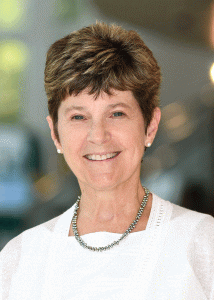 I was disappointed to see some nurses, including ones quoted in the media, pushing back against the vaccine. Perhaps we need a greater emphasis on nurses’ role as trusted messengers and educators and what that responsibility entails.
I was disappointed to see some nurses, including ones quoted in the media, pushing back against the vaccine. Perhaps we need a greater emphasis on nurses’ role as trusted messengers and educators and what that responsibility entails.
Christine Hedges, PhD, RN, NE-BC, is an adjunct assistant professor at University of North Carolina School of Nursing in Chapel Hill.
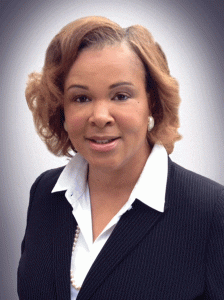 I would like to see more collaboration within the nursing profession as it relates to travel nursing contracts. I would encourage pre-planning dialogue on how we ensure the supply of nurses across the country is evenly dispersed based on pre-COVID vacancy rates. In other words, if an area is already at a high vacancy rate, how do we ensure it doesn’t get worse? How do we ensure hospitals in rural areas are able to safely staff their hospitals? It would be great if the supply of nurses in a labor pool is distributed fairly and not just based on who can afford the high premium dollars. I believe we should have more dialogue and consensus on contract labor premiums and percentage premiums incentive pay to ensure we don’t create a situation where nurses are going to which organization has the best premiums. We need to have a better plan and strategy before the crisis occurs.
I would like to see more collaboration within the nursing profession as it relates to travel nursing contracts. I would encourage pre-planning dialogue on how we ensure the supply of nurses across the country is evenly dispersed based on pre-COVID vacancy rates. In other words, if an area is already at a high vacancy rate, how do we ensure it doesn’t get worse? How do we ensure hospitals in rural areas are able to safely staff their hospitals? It would be great if the supply of nurses in a labor pool is distributed fairly and not just based on who can afford the high premium dollars. I believe we should have more dialogue and consensus on contract labor premiums and percentage premiums incentive pay to ensure we don’t create a situation where nurses are going to which organization has the best premiums. We need to have a better plan and strategy before the crisis occurs.
Jacqueline Herd, DNP, RN, NEA-BC, was most recently executive vice president and CNO at Grady in Atlanta, Georgia.
 A focus on self-care and wellness. Nurses do a great job of caring for everyone else, but don’t typically prioritize their own self-care. As a result, physical and mental health problems (for example, burnout, depression, and suicide) are highly prevalent in our profession, which adversely impact quality and safety of care. Wellness and self-care also must be taught and reinforced in nursing colleges and schools throughout the country. Healthcare systems must invest more in fixing system problems that cause burnout and equip nurses with evidence-based mental resiliency and health promotion programs that improve mental and physical health outcomes. These investments will lead to improvements in return on investment and value of investment, but most importantly, improved population health outcomes and safe high-quality care. We must shift our paradigm from crisis intervention and sick care to wellness and prevention as 80% of chronic disease, including mental health problems, can be prevented.
A focus on self-care and wellness. Nurses do a great job of caring for everyone else, but don’t typically prioritize their own self-care. As a result, physical and mental health problems (for example, burnout, depression, and suicide) are highly prevalent in our profession, which adversely impact quality and safety of care. Wellness and self-care also must be taught and reinforced in nursing colleges and schools throughout the country. Healthcare systems must invest more in fixing system problems that cause burnout and equip nurses with evidence-based mental resiliency and health promotion programs that improve mental and physical health outcomes. These investments will lead to improvements in return on investment and value of investment, but most importantly, improved population health outcomes and safe high-quality care. We must shift our paradigm from crisis intervention and sick care to wellness and prevention as 80% of chronic disease, including mental health problems, can be prevented.
Bernadette Mazurek Melnyk, PhD, APRN-CNP, FAANP, FNAP, FAAN, is vice president for health promotion, University Chief Wellness Officer, and dean and professor at The Ohio State University in Columbus.
 Advancement in nurses being able to practice at the top of their license. This includes advanced practice nurses achieving full practice authority where it hasn’t yet been permanently implemented and mixed models of nursing in general acute hospitals, with an emphasis on professional nursing compared to technical nursing. Achieving this will require improved RN competency in delegation, planning, and decision-making skills.
Advancement in nurses being able to practice at the top of their license. This includes advanced practice nurses achieving full practice authority where it hasn’t yet been permanently implemented and mixed models of nursing in general acute hospitals, with an emphasis on professional nursing compared to technical nursing. Achieving this will require improved RN competency in delegation, planning, and decision-making skills.
Theresa Murphy, MS, RN, CENP, is CNO at University of Southern California Verdugo Hills Hospital in Glendale.
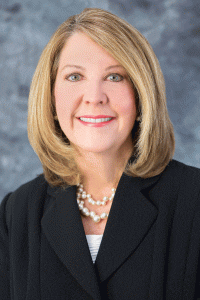 I want to see the true value of nursing emerge with regard to the direct impact that nurses have on outcomes in the hospital. It’s about the value equation of providing patient safety, preventing harm, and being proactive (rather than reactive) in the face of a patient’s deteriorating condition. Generally speaking, in healthcare we are more reactive than proactive because being proactive may require additional resources that don’t fit a financial model. However, the most cost-effective care would be that which doesn’t lend itself to increased harm, additional treatment costs, increased length of stay, potential litigation, or an environment of high nursing turnover, which is costly all around.
I want to see the true value of nursing emerge with regard to the direct impact that nurses have on outcomes in the hospital. It’s about the value equation of providing patient safety, preventing harm, and being proactive (rather than reactive) in the face of a patient’s deteriorating condition. Generally speaking, in healthcare we are more reactive than proactive because being proactive may require additional resources that don’t fit a financial model. However, the most cost-effective care would be that which doesn’t lend itself to increased harm, additional treatment costs, increased length of stay, potential litigation, or an environment of high nursing turnover, which is costly all around.
Evelyn M. Olenick, DNP, RN, NEA-BC, is senior vice president and CNO at Phoebe Putney Memorial Hospital in Albany, Georgia.
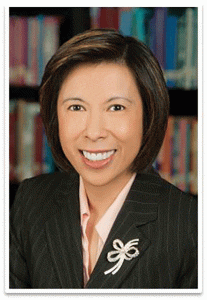 The pandemic highlighted nurses’ essential role and continued sacrifices to keep our patients and communities safe. For the longest time nurses were unsung heroes. I hope to see sustained and increased recognition of the value nurses bring. I also hope to see a sustained focus on nurses’ well-being. It took a pandemic for healthcare administrators and the general public to see the value in investing and caring for our caregivers. I want everyone to join us in our mission to create positive practice environments for nurses and to proactively assess and safeguard their well-being.
The pandemic highlighted nurses’ essential role and continued sacrifices to keep our patients and communities safe. For the longest time nurses were unsung heroes. I hope to see sustained and increased recognition of the value nurses bring. I also hope to see a sustained focus on nurses’ well-being. It took a pandemic for healthcare administrators and the general public to see the value in investing and caring for our caregivers. I want everyone to join us in our mission to create positive practice environments for nurses and to proactively assess and safeguard their well-being.
Christine Pabico, PhD, RN, NE-BC, FAAN, is director for the Pathway to Excellence® Program at the American Nurses Credentialing Center in Silver Spring, Maryland.
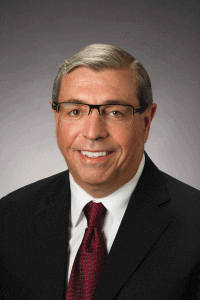 The value of nurses was recognized as never before during the pandemic, especially for their roles in the planning and innovation of care delivery. Nurses became even more integral to patient recovery by working with other care providers to determine which treatments positively impacted COVID recovery and which did not. I would love to see nursing executive leadership continue the momentum it gained during the pandemic and improve. I would also like to see nurses continue to be valued as active members of the overall healthcare team.
The value of nurses was recognized as never before during the pandemic, especially for their roles in the planning and innovation of care delivery. Nurses became even more integral to patient recovery by working with other care providers to determine which treatments positively impacted COVID recovery and which did not. I would love to see nursing executive leadership continue the momentum it gained during the pandemic and improve. I would also like to see nurses continue to be valued as active members of the overall healthcare team.
During the pandemic, telehealth appointments became the “new normal,” allowing patients to stay at home instead of reporting to physician offices, which decreased their risk of exposure. The concept of “healthcare at home” became common when patients could receive care at home, thus freeing up a scarce hospital bed for another patient who needed it more. I would like to see payers continue to reimburse for these alternative care delivery mechanisms.
Mark Pelletier, MS, RN, is chief operating officer and chief nurse executive for The Joint Commission in Oakbrook Terrace, Illinois.
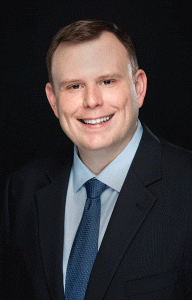
I would like to see us come to a consensus that we need to move away from just-in-time staffing models. It isn’t what is best for our employees or our patients.
Joseph Potts, MSN, RN, is clinical supervisor for the central monitoring unit at Northside Hospital Gwinnett in Lawrenceville, Georgia.
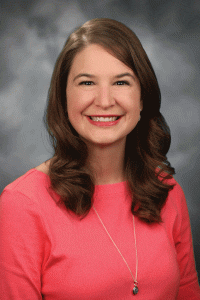
I’m hopeful that the pandemic shifted nurses’ thinking and understanding of their value and role in publishing their innovations. Before the pandemic, nurses implemented great innovations that directly impacted care, but these innovations were rarely disseminated formally (for example, publication, posters, presentations). When the pandemic hit, prompting an immediate need to disseminate innovations so others could learn, journals were flooded with submissions from nurses. Moving forward, it would be great if nurses would continue to submit their innovations for publication, and it would also be great if more journals offered short columns/departments aimed at publishing practical, direct care innovations.
Staci Reynolds, PhD, RN, ACNS-BC, CCRN, CNRN, SCRN, CPHQ, is an associate clinical professor at Duke University School of Nursing and an infection prevention clinical nurse specialist at Duke University Hospital in Durham, North Carolina.
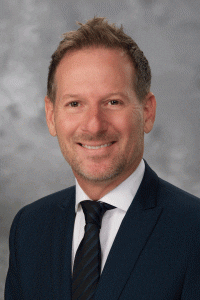 The one big change I would like to see in our profession is a new care model. Our traditional care models were developed many years ago, and our environment has changed significantly since then. For example, we have seen a significant increase in patient acuity, the length of stay is considerably lower, and we now have access to technology that can enhance our practice. To that end, it’s time to develop a 21st-century care model that would allow everyone to practice and work at the top of their license and capabilities. We can’t afford to ask nurses to do everything for all patients. I understand the immense implications of such a paradigm shift. It will require a partnership by many stakeholders: nursing leaders, nurses, academia, regulatory agencies, governmental agencies, and labor organizations, to name a few. But now is the time to innovate together, try new things, and be part of a solution that ensures health for a better world.
The one big change I would like to see in our profession is a new care model. Our traditional care models were developed many years ago, and our environment has changed significantly since then. For example, we have seen a significant increase in patient acuity, the length of stay is considerably lower, and we now have access to technology that can enhance our practice. To that end, it’s time to develop a 21st-century care model that would allow everyone to practice and work at the top of their license and capabilities. We can’t afford to ask nurses to do everything for all patients. I understand the immense implications of such a paradigm shift. It will require a partnership by many stakeholders: nursing leaders, nurses, academia, regulatory agencies, governmental agencies, and labor organizations, to name a few. But now is the time to innovate together, try new things, and be part of a solution that ensures health for a better world.
Sylvain Trepanier, DNP, RN, CENP, FAONL, FAAN, is senior vice president and CNO for Providence in Renton, Washington.
How will relationships between members of the healthcare team (nurses, physicians, respiratory therapists, pharmacists, support staff, and others) be different in a post-pandemic world?
Multi-professional relationships were strengthened, but also strained under the prolonged and stressful circumstances of the pandemic. People grew to appreciate the unique contributions and challenges of each other profession as many team members had to learn or expand skillsets and cross-cover to other disciplines. For example, anesthesia providers performing the role of respiratory care providers when managing ventilators and noncritical care nurses caring for critical patients under the direction of critical care nurses. As they all worked closely for many long hours with the common purpose to help patients, they got to see the unique roles and capabilities of the other. I hope that this appreciation for each other’s contributions continues. — Adamski
The pandemic experience prompted new relationships among the professions, and that connectedness still exists. We’re sharing stories that will reinforce our commonality and bond us together forever. — Brown-DeVeaux
The relationships will be stronger. We leaned on each other during the pandemic to care for patients, families, and each other. Those bonds and relationships will continue to grow and solidify. — Diatta
There has been, and will continue to be, improved appreciation for the various professions and how they interact, including intensivist physicians, infectious disease physicians, advanced practice RNs, public health practitioners, epidemiologists, and respiratory therapists. — Murphy
 Here at Emory, we had some of the lowest mortality rates in the nation for critical care of patients with COVID-19. We realize that success was less about what individuals did and more what the team did and how they worked together from a collaboration standpoint. We published two interprofessional studies during the pandemic and hope to do more in the future.
Here at Emory, we had some of the lowest mortality rates in the nation for critical care of patients with COVID-19. We realize that success was less about what individuals did and more what the team did and how they worked together from a collaboration standpoint. We published two interprofessional studies during the pandemic and hope to do more in the future.
Sharon Pappas, PhD, RN, NEA-BC, FAAN, is CNO at Emory Healthcare in Atlanta, Georgia.
My hope is that everyone is just a bit more patient and compassionate with one another. We have all made significant sacrifices, but we all also have been given the opportunity to gain perspective. I hope we all take advantage of that opportunity. — Potts
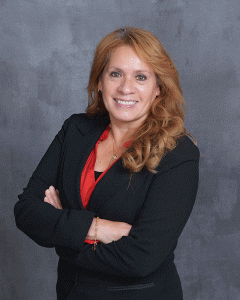 The pandemic brought us all closer together, and we are continuing to see a closer, tight working relationship amongst the different healthcare providers.
The pandemic brought us all closer together, and we are continuing to see a closer, tight working relationship amongst the different healthcare providers.
Sonia Valdez, DNP, RN, ACNP, GANP, PHN, CVRN-BC, is manager of post-acute programs at UC Irvine Health in Orange, California.
Is your organization planning to assess and address social determinants of health (SDOH) differently as a result of lessons learned during the pandemic? If yes, how?
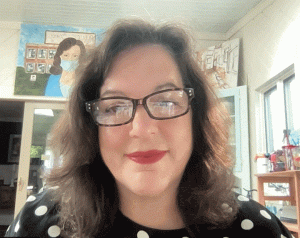 By amplifying the voice of school nursing, my hope is that policy decisions like staffing are centered around children’s health. The presence of a school nurse in every building has never been more urgent. We democratize health equity for the most vulnerable and under-resourced children and communities. But we have to be present to make a difference.
By amplifying the voice of school nursing, my hope is that policy decisions like staffing are centered around children’s health. The presence of a school nurse in every building has never been more urgent. We democratize health equity for the most vulnerable and under-resourced children and communities. But we have to be present to make a difference.
Robin Cogan, MEd, RN, NCSN, is The Relentless School Nurse for the American Nurse Journal website and a school nurse for the Camden City School District in Camden, New Jersey.
We have an extensive organizational plan around addressing SDOH that was in place pre-pandemic and has only gotten stronger. We have community health workers, community hubs, and numerous community outreach efforts into schools in underserved areas of our community. There are specific outcome goals we use to measure progress, such as reduction in infant mortality and completing breast cancer screening. Our system wants to become a community “anchor organization” as the largest healthcare employer in the region. We see our role in helping people out of poverty as an employer, as well as being a provider of culturally sensitive healthcare to the community. All of our leaders are being required to undertake a diversity, equity, and inclusion learning journey to ensure that we are providing equitable care to all. — Gordin
Our initial efforts are twofold. First, we’re increasing awareness and sensitivity to under-represented groups within the employee ranks (along with increased efforts to drive equitable employment opportunity for under-represented groups), and second, we’re working on improving access to healthcare for under-represented communities. — Murphy
The Joint Commission’s new Quick Safety advisory, “Understanding the needs of diverse populations in your community,” provides four strategies and actions to help hospitals and medical centers support their communities and offers lessons learned about how COVID-19 shed light on healthcare disparities during the pandemic and prior. We and other health professionals have an economic and moral responsibility to address the health and well-being of their diverse and vulnerable populations. Together, we can make strides to decrease healthcare disparities. In addition, The Joint Commission is working with a technical advisory panel to potentially develop standards that would address healthcare disparities. This project is scheduled for later in 2021. — Pelletier
 We witnessed the impact of the COVID-19 virus on diverse communities, resulting in moral distress for many nurses and other staff. MGH quickly established a new and expanded department dedicated to diversity, inclusion, and equity with a 10-point plan with goals and strategies to advance the organizational vision and mission. Raising awareness about the virus, mask wearing, and the vaccine was important to limit spread of the virus, hospitalizations, and deaths in these communities. Prevention kits also were distributed in areas greatly impacted. The work to enhance the vision and mission for equity in care is a priority that will continue.
We witnessed the impact of the COVID-19 virus on diverse communities, resulting in moral distress for many nurses and other staff. MGH quickly established a new and expanded department dedicated to diversity, inclusion, and equity with a 10-point plan with goals and strategies to advance the organizational vision and mission. Raising awareness about the virus, mask wearing, and the vaccine was important to limit spread of the virus, hospitalizations, and deaths in these communities. Prevention kits also were distributed in areas greatly impacted. The work to enhance the vision and mission for equity in care is a priority that will continue.
Colleen K. Snydeman, PhD, RN, NE-BC, is executive director for the office of quality, safety, and practice at Massachusetts General Hospital (MGH) in Boston.















